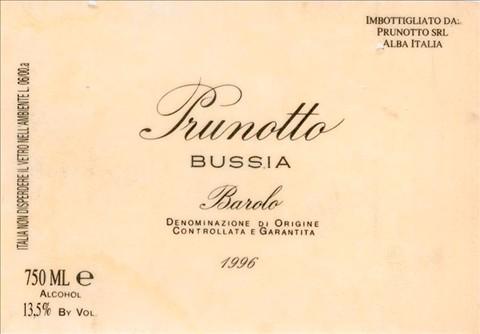1996 Barolo Red Blend
The Prunotto Bussia from the illustrious Barolo region is a captivating red blend that showcases the region's esteemed winemaking heritage. This vintage, dating back to 1996, presents a stunning deep red color, inviting the senses to delve into its rich aromas. On the palate, it offers a medium body that is beautifully balanced, enhanced by a high acidity that brings a refreshing brightness to the experience. The tannins are notable, providing structure and depth without overwhelming the wine. The fruit intensity is prominent, with luscious notes of dark fruits harmoniously intertwined with subtle earthy undertones. This wine is remarkably dry, making it an excellent companion to a variety of dishes, perfect for those seeking a sophisticated wine experience that embodies the essence of Barolo.
The Prunotto Bussia from the illustrious Barolo region is a captivating red blend that showcases the region's esteemed winemaking heritage. This vintage, dating back to 1996, presents a stunning deep red color, inviting the senses to delve into its rich aromas. On the palate, it offers a medium body that is beautifully balanced, enhanced by a high acidity that brings a refreshing brightness to the experience. The tannins are notable, providing structure and depth without overwhelming the wine. The fruit intensity is prominent, with luscious notes of dark fruits harmoniously intertwined with subtle earthy undertones. This wine is remarkably dry, making it an excellent companion to a variety of dishes, perfect for those seeking a sophisticated wine experience that embodies the essence of Barolo.




